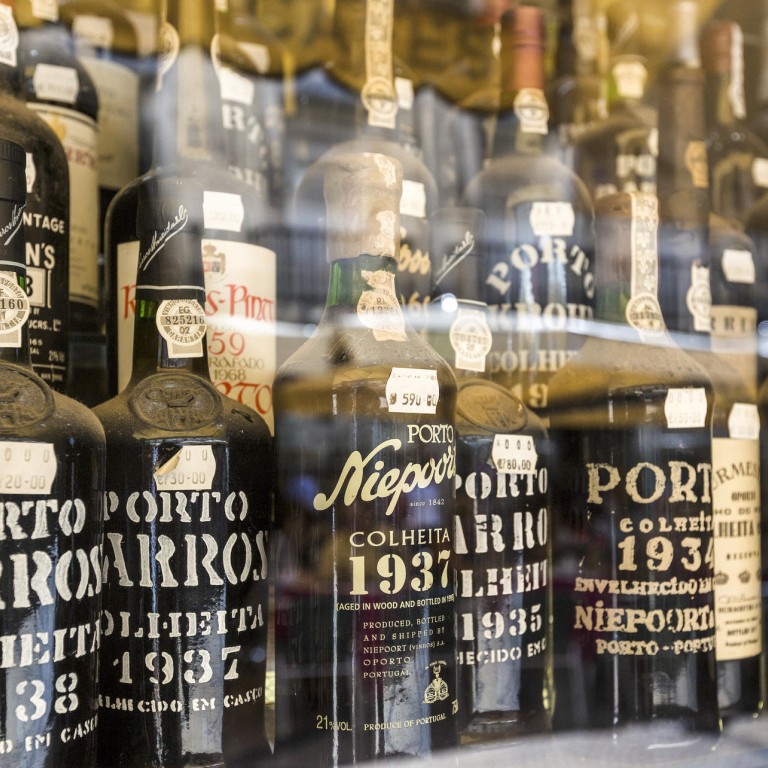
China is the next port of call for traditional winemakers
Port producers have been celebrating the inauguration of Port Wine Day, on the anniversary of the founding of the Douro appellation - the "mother" of all appellations - in 1756.
"But what brings us here today is not the past," said Manuel Cabral, president of the region's governing body, the Instituto dos Vinhos do Douro e do Porto (IVDP), "it is the future." That future would seem to be in China.
Portugal holds 1 per cent of the China wine market (the same percentage as New Zealand, Germany and Argentina) with France accounting for 42 per cent, according to David Chow,the CEO of Altavis Fine Wines in Shanghai.
China is now the world's number one importer of Bordeaux. The success of this wine region, he says, is because producers entered the market at the top end with the first growths (Lafite, Latour, Margaux, and so on) and created, or reinforced, the image of Bordeaux as being home to the most prestigious names in the wine world.
Chinese government clampdowns on excessive gift-giving (and corruption) have affected the ultra-premium market - which could certainly include vintage port - but Chow believes there is space for it.
He thinks the port industry should leverage its long history and tradition, and communicate the message that it is a product made with traditional methods, and consumed by the elite for centuries.
"The Chinese want to consume status symbols," he says, adding that it is necessary to balance that sense of tradition with modernity, a route that luxury labels such as Louis Vuitton have long followed.
Jordi Franch de Francisco is chief commercial officer at Miguel Torres in charge of global commercial operations, and has had significant experience in China, where Torres has run a distribution company since 1999. He identifies low consumer awareness as an issue for the port industry, but says that the fact it is a high-status product works in its favour.
Debra Meiburg, a master of wine, thinks one strategy could be to source vintage ports from private collectors to offer on the burgeoning Hong Kong auction market, thereby gaining visibility.
She warns against generic "our wines go with Chinese food" campaigns, one of which lost market share for the sweet white wines of Sauternes, which include the rock star label, Chateau d'Yquem. She also notes that California introduced its entry-level wines first - and it has taken them 15 years to reposition themselves in the premium market.
Vintage port is just one sector of the port market. It creates a reputation
But it may be that the port industry isn't keen to enter the market from the top, starting with vintage port. "Vintage port is just one sector of the port market. It creates a reputation, it is our flagship … but it is produced in tiny, tiny quantities," says Dominic Symington, a 13th-generation member of the prominent Symington house.
He is adamant that aged tawnies and, in particular, 10- and 20-year-olds served chilled, are perfect for the Asian market, with its high temperatures and humidity. IVDP's Bento Amaral, head of the "tasting chamber" at the institute's headquarters, adds that unlike vintage port, old tawnies (aged 100 years or more) are available from the cellars of Symington, Taylor's and Niepoort.
Symington would like to see the marketing of port simplified to cut down on the bewildering number of categories and styles. "Our biggest problem is communication," he says. Asians want to know about the wine they are drinking, and the face behind the label, so both Chow and Meiburg advise port producers to provide more information. Meiburg points out that the Bordelais have been setting up offices in Greater China, and sending family members there to engage with the market.
She thinks port producers should do the same, and Chow says producers should have their own marketing teams.
Chow quotes the current per capita annual consumption of wine in China at 1.6 litres (such a figure can reach as high as 50 litres in a mature market), and says that if in the next 10 years that increased to just three litres, it would be "massive".
But he says producers must take time to understand the market, and that can be a slow process. Chow has been working in China since 1990. "Sometimes even I am lost," he says.

